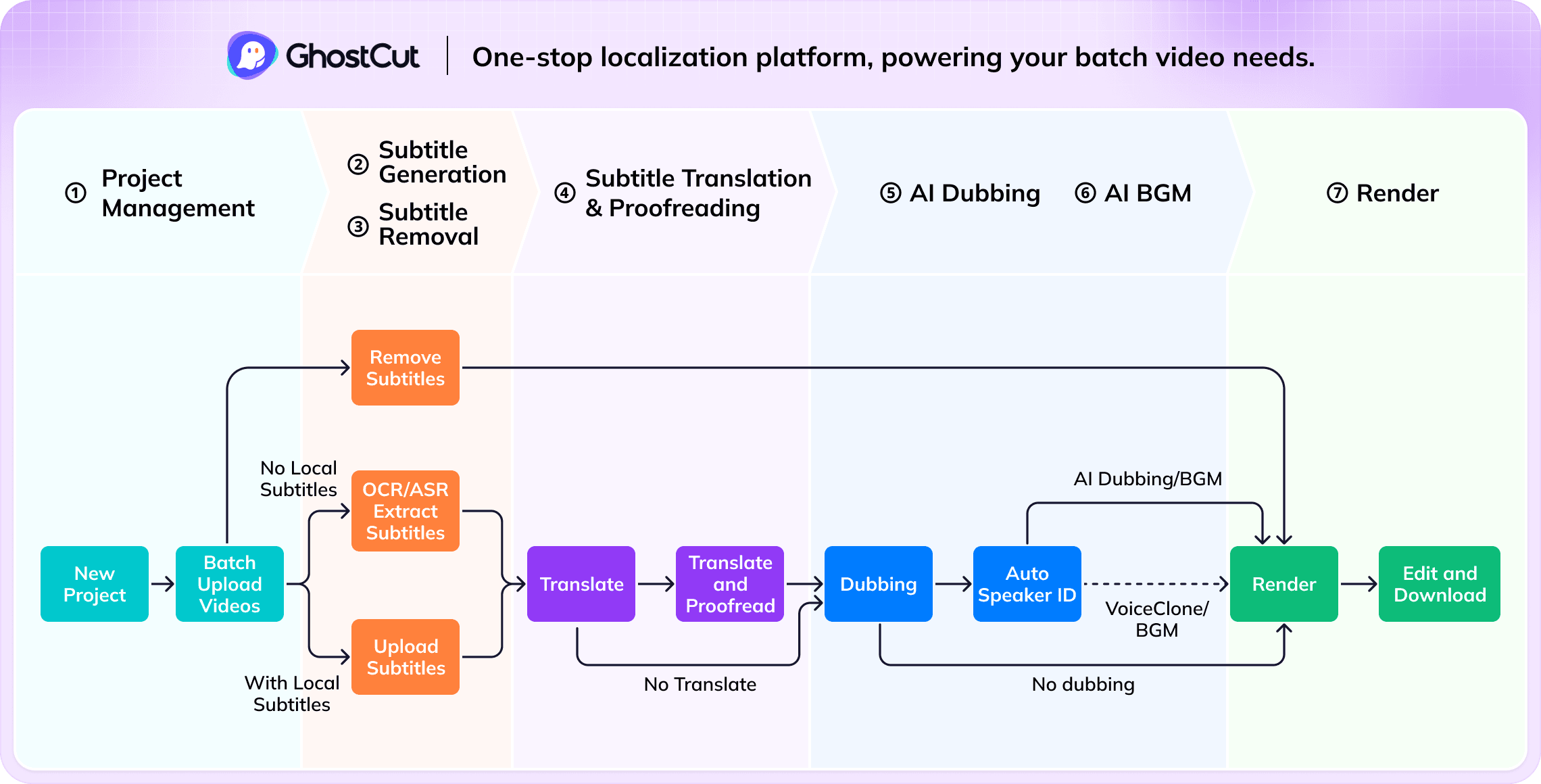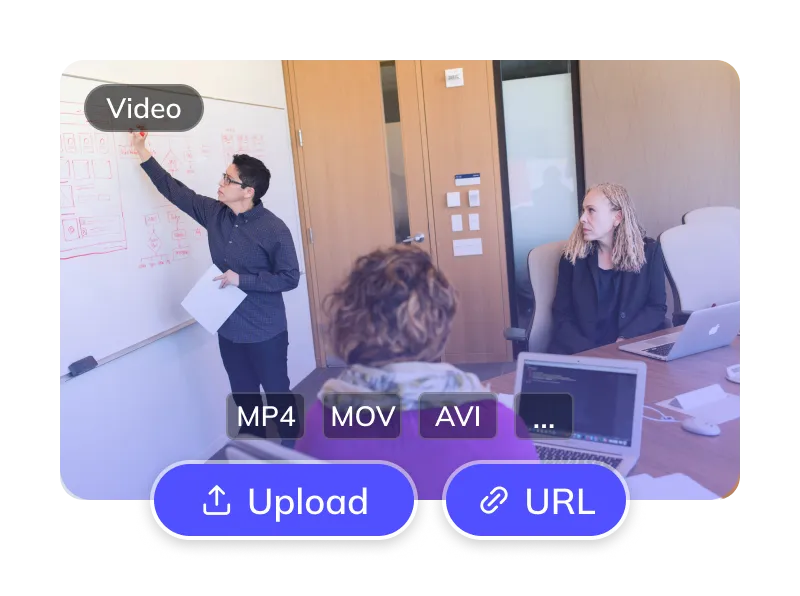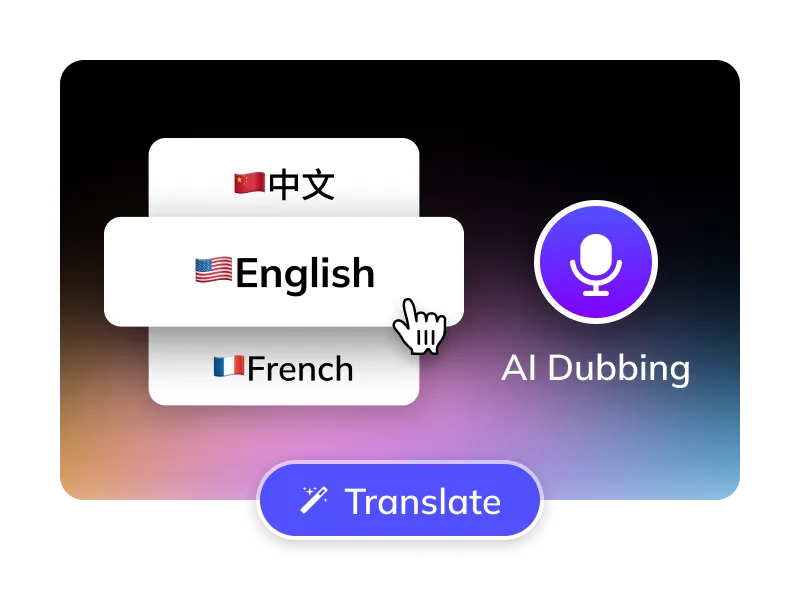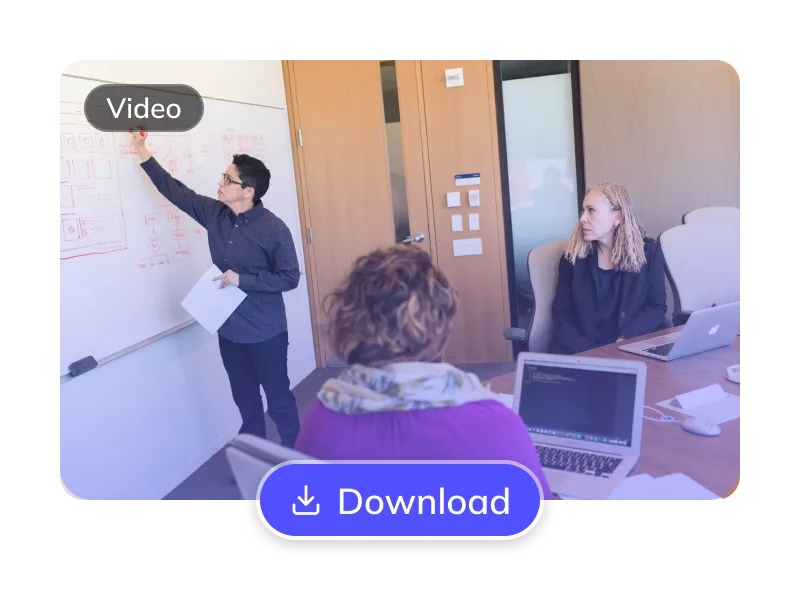How to Translate Arabic Videos to English ?
Translate Arabic Videos to Korean in 3 Easy Steps
Trusted by 1,500,000+ Global Creators and Businesses
Why GhostCut for Your Video Translations?
GhostCut is your all-in-one AI solution for translating Arabic content into natural, engaging Korean.
Effortless Project Management
Manage Arabic assets, subtitles, & Korean videos. Batch process projects efficiently.
Pinpoint Korean Accuracy
Up to 99.5% accurate. Optimized for Arabic-to-Korean with LLM calibration & multi-agent review for culturally fluent Korean translations.
Lifelike Korean AI Dubbing
Choose from diverse, human-like Korean AI voices (US/UK accents). Emotion-cloning technology captures original tone for natural Korean delivery.
Flexible Arabic Subtitle Options
Optionally erase original Arabic hardsubs for a clean slate. Translate embedded Arabic subtitles directly.
Smart Multi-Speaker ID (Arabic)
AI detects multiple speakers in Arabic videos. Assign or clone distinct Korean voices per character, with cross-episode consistency for complex Korean dubs (dramas, interviews).
Efficient Batch Processing & API
Batch translate and dub 100s of Arabic videos to Korean at once. Seamlessly integrate with our robust API.
Versatile BGM Control
Keep or mute original BGM. Our unique tech can also isolate sound effects, meeting diverse copyright and distribution needs.
Unbeatable Value
Flexible Arabic-to-Korean plans. Try core features free. Automated pro service from just $0.1/minute.
Easy Online Access
No downloads. Instantly translate Arabic videos to Korean online. Works on Windows, Mac, & major mobile browsers for cloud processing anywhere.
The GhostCut Edge: Unmatched Accuracy, Speed, and Value.
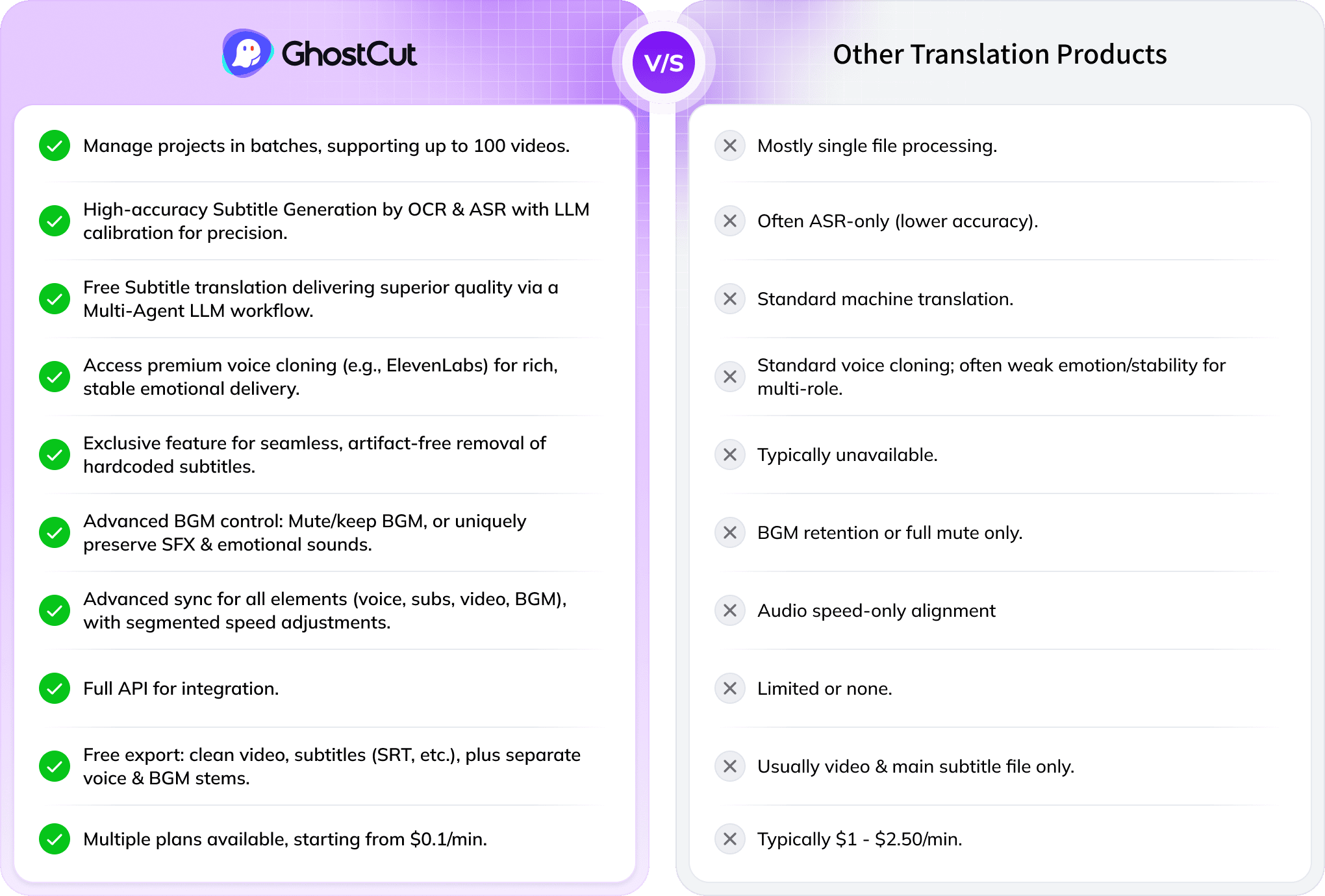
Every Algorithmic Optimization, Engineered for Quality Korean Video
Mastering Long-Form Arabic Drama & Multi-Character Dubbing
Translating a 100-minute Arabic drama with 4000+ lines and many characters into Korean is tough. Standard AI struggles to tell speakers apart, causing errors. GhostCut’s multi-modal AI (video, voice, text) excels in long-form, multi-speaker content, ensuring accurate, consistent character voices across entire series.
Translate Now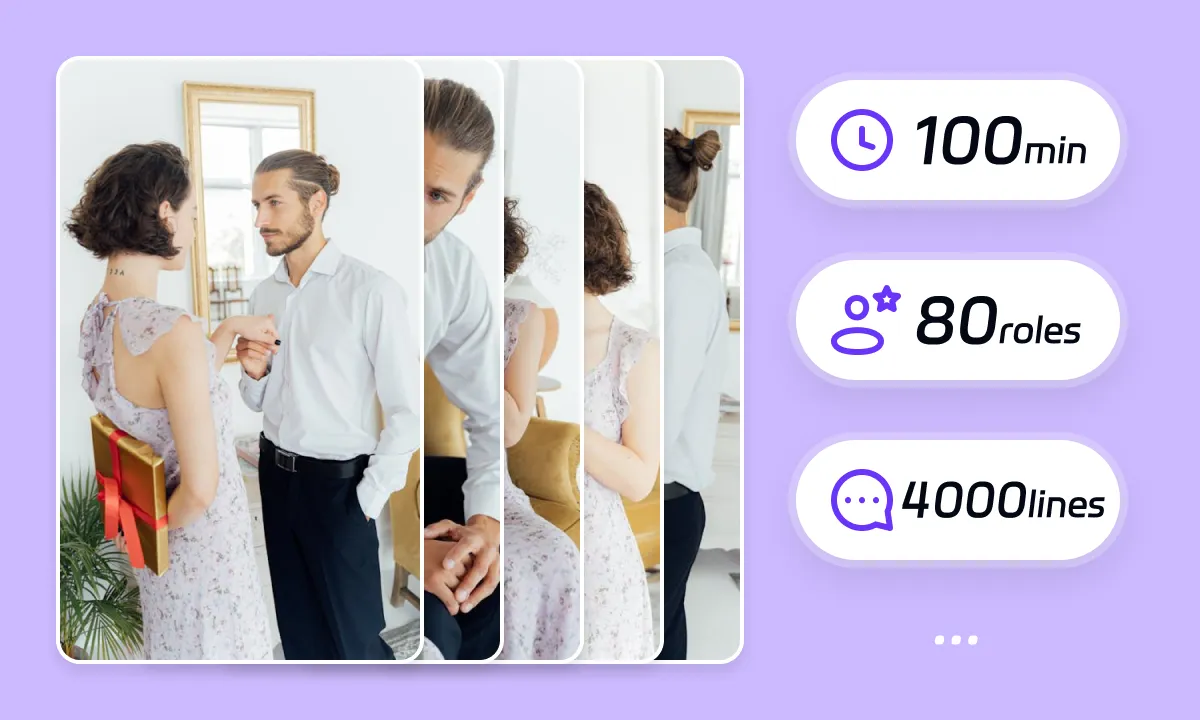
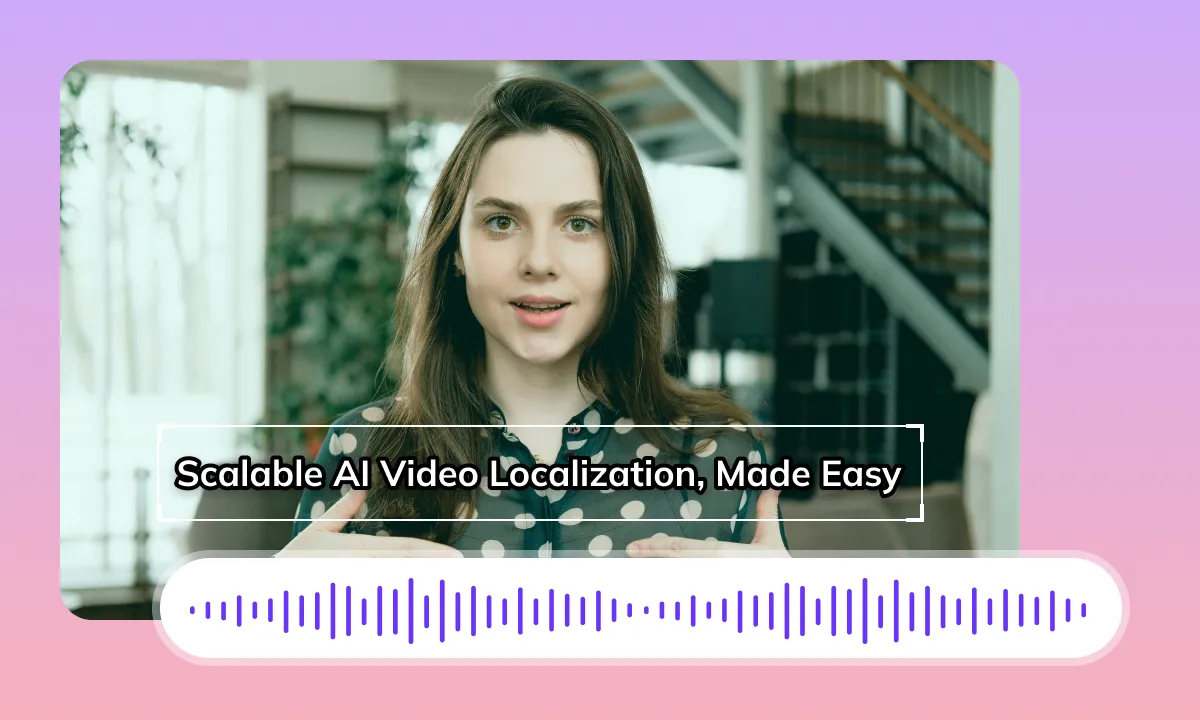
Seamless Korean Dubbing & Perfect Lip-Sync
GhostCut ensures natural Korean audio flow by treating related subtitles as whole ideas for TTS. It then precisely times new Korean subtitles. Since Arabic-to-Korean translation can change speech length, our AI expertly adjusts the new Korean audio, subtitles, video, and BGM to maintain perfect sync, just like a seasoned editor.
Translate NowBoost ROI with Flawless Arabic Subtitle Removal
Original Arabic hardsubs can limit your video's global appeal. GhostCut’s AI doesn't just blur; it intelligently reconstructs the background obscured by Arabic subtitles, even complex ones, for a perfectly clean, high-quality visual. This means better viewer engagement, longer watch times, and higher ROI.
Translate Now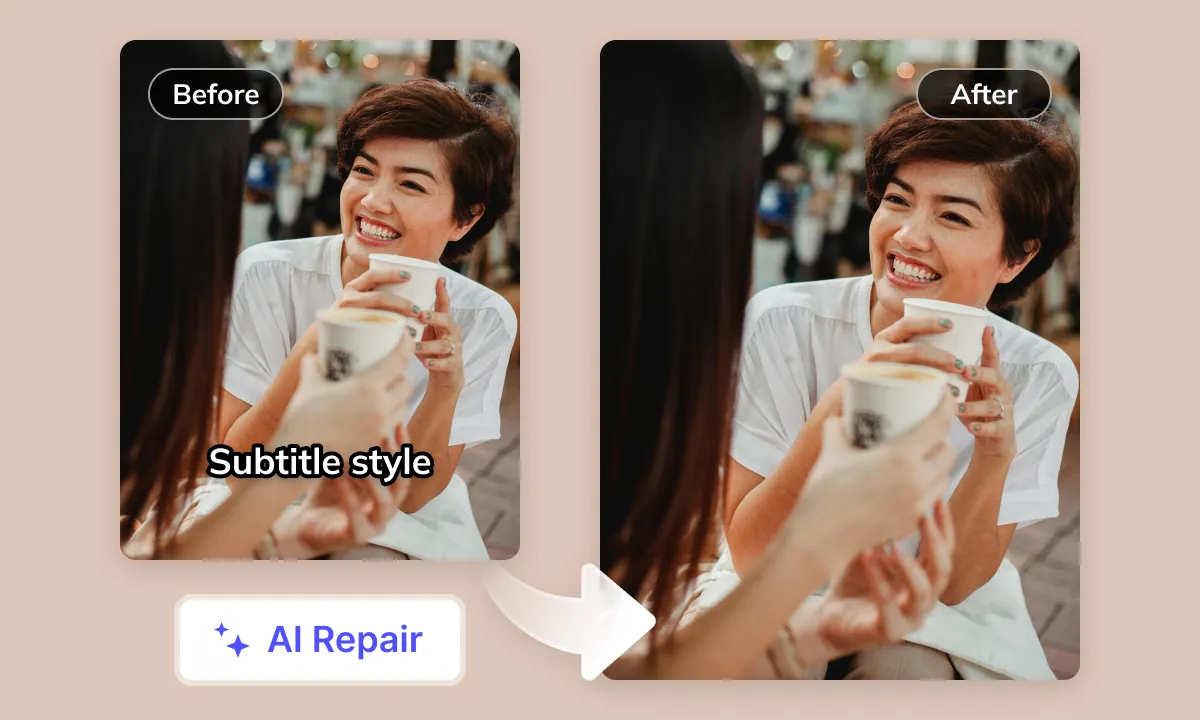
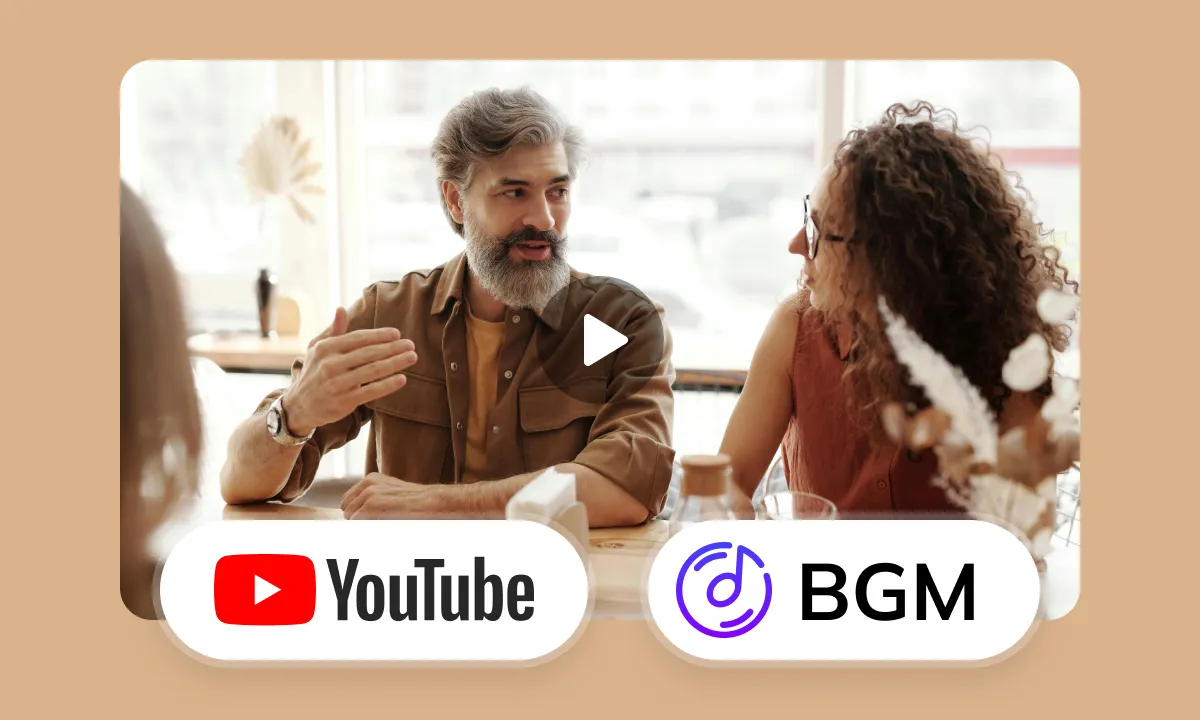
Smart Audio Control for YouTube Creators
Navigating BGM copyright on YouTube is tricky. GhostCut’s advanced audio separation isolates Arabic dialogue for translation, while intelligently managing BGM, sound effects, and even emotional expressions. Our "Keep SFX, Remove Music" option is a creator favorite for avoiding copyright issues without losing your video’s impact.
Translate NowYour Arabic Videos Deserve a Global Korean Audience
Quality Arabic videos (documentaries, shows, food, vlogs) struggle to reach Korean viewers curious about the Middle East due to language barriers. On platforms like YouTube or TikTok, many great Arabic videos lack professional Korean translationdubbing. This difficulty in understanding for Korean users hurts content spread, engagement, and global reach. Thus, there's an urgent need for professional, efficient Arabic-to-Korean AI video translation and dubbing services
Arabic to Korean Video Translation: Challenges and Solutions
Managing Native Content Complexity
If the original video contains embedded Arabic hardcoded subtitles or voiceovers, these might conflict with the Korean content intended for the target audience, negatively impacting the viewing experience. A primary challenge is to effectively manage these native elements to ensure they do not interfere with subsequent Korean translation and localization
Bridging Vast Linguistic Cultural Gaps
Arabic belongs to the Semitic language family, while Korean is generally considered an isolated language or part of the Altaic family. Both exhibit significant differences in grammatical structure, vocabulary, expression habits, and cultural background. During translation, it is crucial to deeply understand the cultural nuances, religious idioms, and regional characteristics of the source language. The challenge lies in accurately conveying these elements in Korean in a way that aligns with the acceptance habits of Korean audiences, avoiding the awkwardness or misunderstandings that can arise from literal translation
Writing Direction Subtitle Layout Challenges
Arabic is written from right to left, with complex ligatures and character variations. Korean (Hangul), conversely, is written from left to right and organized into syllabic blocks. When converting Arabic content to Korean subtitles, a complete reversal of writing direction is required, necessitating a re-planning of layout space and line-breaking rules to ensure Korean subtitles are clear, legible, and optimally fit the screen dimensions
Matching Speech Speed Information Density
Different languages have varying expression efficiencies and habitual speech rates. The expressive nature of Arabic might result in a different information density compared to Korean, potentially leading to Korean translations that are either too long or too short. A significant technical challenge is adjusting the duration of Korean voiceovers or subtitles to synchronize with the original video's visuals and pacing, all while ensuring information integrity
Difficulty in Arabic AI Speech Recognition
Arabic encompasses numerous distinct dialects, with significant pronunciation differences between Modern Standard Arabic (MSA) and various regional dialects. Relying on AI for accurate Arabic speech recognition faces severe challenges when videos feature different dialects, accents, multiple speakers, or background noise. This directly impacts the accuracy of subsequent translations
Sourcing High-Quality Korean AI Voices
While Korean AI voice synthesis technology is available, obtaining high-quality Korean AI voices that are natural, fluent, emotionally rich, and capable of matching the tone and style of video characters remains difficult. Robotic or unexpressive voices significantly diminish the video viewing experience
Lip-Syncing Voiceovers with Original Footage
Arabic and Korean have distinct pronunciation methods and mouth articulation characteristics. Achieving natural synchronization between Korean voiceovers and the original on-screen character's lip movements for Arabic videos requires complex algorithms and precise adjustments to enhance viewing immersion and realism
Ideal AI Video Translation Workflow Goals
A mature AI video translation system from Arabic to Korean should aim to achieve: high-accuracy Arabic speech recognition - precise translation that bridges cultural barriers and conforms to Korean linguistic norms - natural, fluent Korean AI voiceovers with optimal lip-syncing - automated subtitle generation, layout, and precise audio-visual alignment and synthesis
Tackling Video Translation Challenges with AI Empowering your Arabic content for any worldwide scenario.
Your All-in-One AI Translation Studio
GhostCut offers more than just Arabic-to-Korean translation. It's a complete AI-powered workflow: subtitle extraction 、 removal 、 translation and proofreading to multi-character dubbing , BGM processing, and final rendering. Go from Arabic source to global-ready videos, effortlessly.
